Stockel, Belgium, July 23rd - August 4th, 1910
Tragedy and high flights at the biggest Belgian meeting

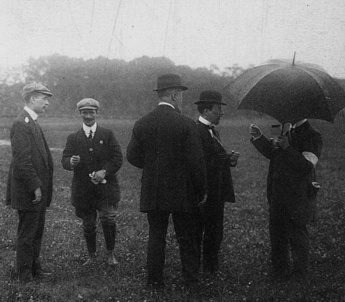



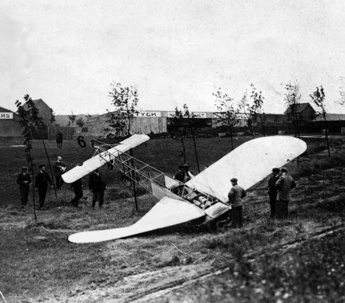
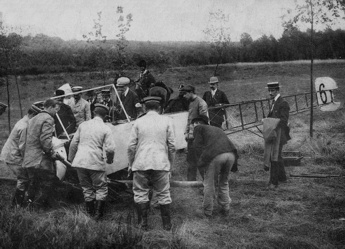


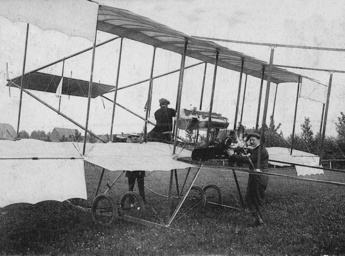

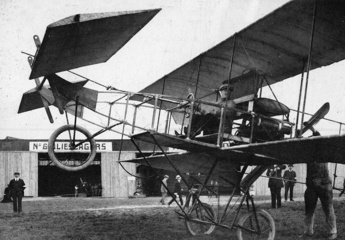



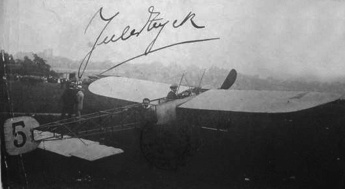
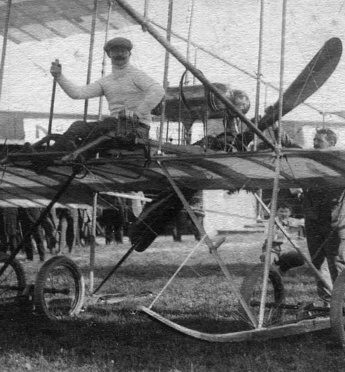
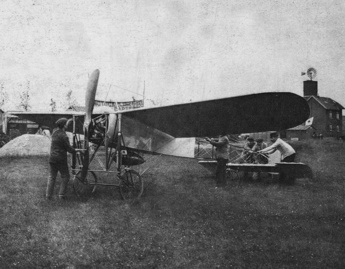

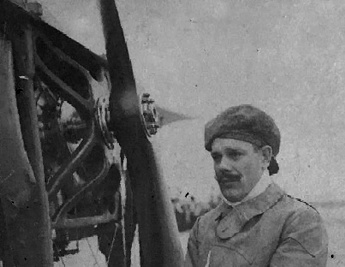
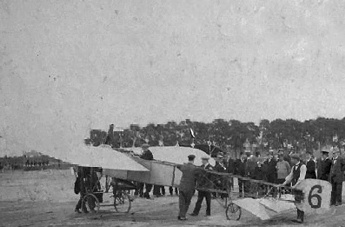





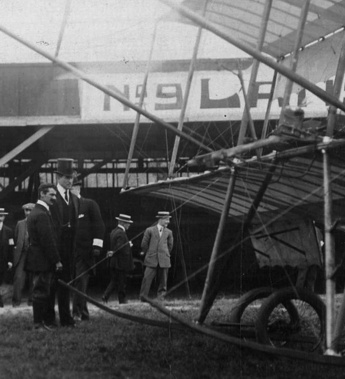
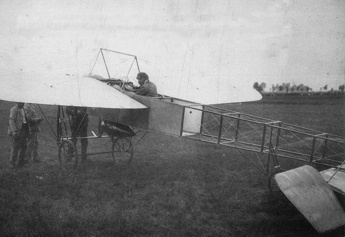
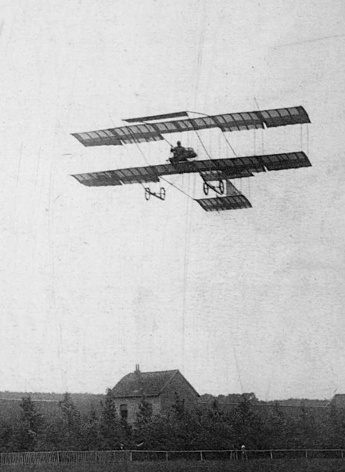
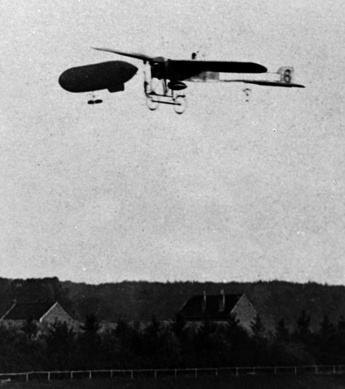
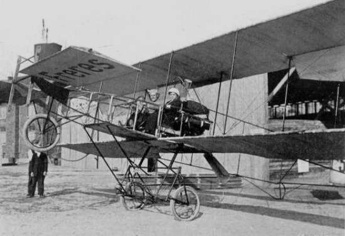
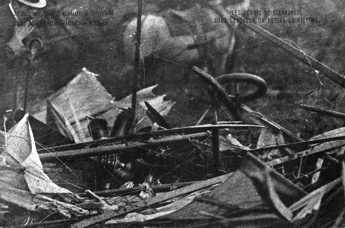

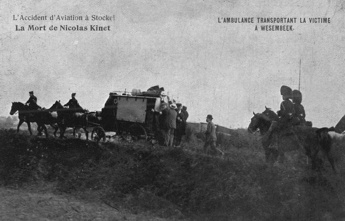



Brussels is the capital of Belgium, consisting of 19
municipalities. In 1910 it had a population of around
600,000, of which around 200,000 in the city itself. In
1905 Belgium celebrated the 75th anniversary of its
independence, and in 1897 Émile de Mot, future mayor
of Brussels, proposed that Brussels would apply for
hosting the World Exhibition of that year. This
didn't come off, but the town was granted the 1910
event instead. The exhibition took place in the
municipality of Solbosch, south of the city centre, from
April 23rd to November 1st. It was a great success,
attracting 13 million visitors to the displays of 27
participating countries.
Many different events were organised in connection with
the World Exhibition. One of them was a two-week aviation
meeting, held between July 23rd and August 4th. It was
held on a racecourse south of Stockel, a village in the
municipality of Woluwe-Saint-Pierre (Sint-Pieters-Woluwe
in Flemish), one of three towns named after the little
river Woluwe, around seven kilometres east of central
Brussels. It was decided before the meeting that only
Belgian pilots would be invited. Baron Joseph de Crawhez,
the president of the sporting committee of the meeting,
declared that the Belgian pilots were the equals of any
other in the world, with the possible exception of Hubert
Latham. He further explained that the budget didn't
allow extravagancies of the kind that had caused several
of the aviation meetings held earlier in 1910 to lose
huge amounts of money. He also declared that he
didn't approve of the "piratic activities"
of the foreign representatives and agents who flocked
around the pilots and meetings, charging hefty
commissions.
De Crawhez had a point. It was a mainly well-qualified
field of twelve pilots, headed by Jan Olieslagers, the
world endurance record holder and the star of the recent
Reims meeting. The entrants included several other
successful participants of previous meetings, like Joseph
Christiaens, Charles van den Born, Nicolas Kinet and
Baron Pierre de Caters.
Twelve hangars were quickly built at the racecourse,
which was long and narrow, exposed to winds and hardly an
ideal airfield. The 1.667-kilometre course consisted of
two parallel straights connected by hairpin turns. No
less than 24 different contests were announced, with a
total of 155,000 francs of prize money to be won.
Immediately before the start of the meeting two of the
pilots withdrew. Joseph Christiaens had wrecked his
machine during the Bournemouth meeting the week before
and still suffered from a leg injury. He visited the
airfield several times, though, and at a ceremony he was
handed the order of Saint Anne, which he was granted from
the Czar of Russia at the St Petersburg meeting in May.
Chevalier Jules de Laminne also withdrew, reportedly
because of a conflict with Alfred Lanser, another of the
participants, over the establishment of a flying school
at the Kiewit airfield near Antwerp.
Saturday 23 July
The first day of the meeting didn't start promising.
It had rained since midnight and the field had turned
into a marsh. After a particularly heavy shower around
two o'clock the rain stopped and there was some brief
sunshine. The pilots were still reluctant to fly and
remained in their hangars. Around half past three the
orchestra started playing "La Brabançonne", the
Belgian national anthem, and King Albert I arrived
together with his wife, Queen Elisabeth. They were seated
in the honorary grandstand, and their presence seemed to
prompt some activity from the flyers. At 16:10 Van den
Born rolled out his Farman and took off, despite the
still windy conditions. He flew a lap at an altitude of
around ten metres and then landed in front of the king,
who had come down from the grandstand to meet him. The
gate in the fence that separated the airfield from the
spectator area couldn't be opened, but it didn't
discourage Van den Born, who climbed over it to meet the
king. Later, when somebody had found the key, all the
pilots were presented to the king.
At 16:40 Olieslagers tried to make a flight, but his
engine stopped before he left the ground. This made him
briefly lose control and a wheel broke when the machine
turned sharply. Five minutes later Van den Born made a
second flight and climbed to 30 metres, but at the end of
the lap he was hit by a gust. The machine rolled sharply
to the left and the pilot couldn't avoid hitting the
ground, damaging the landing gear and the left wings. Van
den Born managed to hang on to his seat and was not
injured.
At five o'clock, when the king and queen had left,
Lanser took off in his Farman. He quickly climbed to 200
metres in front the enthusiastic crowds and flew a couple
of laps during a five-minute flight. At one point a gust
made him lose control and the machine fell more than
fifty metres in three seconds, making spectators scream
in horror, but he managed to regain control. At half past
six Olieslagers had replaced his wheel, and took off. He
climbed to an officially measured altitude of 381 metres
during a flight of eight and a half minutes, winning the
Altenloh prize for the first pilot to reach 300 metres
during the meeting and taking the lead in the daily
altitude contest. Lanser wanted to take the prize back
and took off immediately afterwards. He reached 388
metres during a flight of almost ten minutes before
descending in a long vol plane. After these flights the
10,000 spectators started leaving, and at seven
o'clock a cannon shot announced the end of the
day's flying.
Sunday 24 July
A huge crowd, bringing more than 3,000 cars and causing a
big traffic jam, gathered at the airfield to watch the
second day of flying. Even though the weather was still
windy and cloudy they didn't have to wait as long as
the day before. 25 minutes after the one o'clock
opening Nicolas Kinet took off. He flew four laps during
a flight of almost five minutes. The next to try was
Olieslagers, but he ran into trouble already before
leaving the ground. After a roll of some fifty metres the
machine was caught by a gust and at take-off speed ran
into a hole in the ground. The wings were damaged and the
propeller, the engine support and the landing gear were
destroyed. Olieslagers was fortunately unharmed and had a
brand-new replacement machine waiting in his hangar.
After Olieslagers' crash the wind increased, reaching
more than 10 m/s, and during the next two and a half
hours nobody wanted to risk a flight. Around half past
four it calmed down somewhat and Kinet rolled out his
machine. It was still windy, and he only needed a take-off
roll of ten metres into the wind before leaving the
ground. He flew four laps, before landing in front of the
grandstands. The ovations after his flight had hardly
ended when Olieslagers took off in his replacement
machine. He was going for the altitude prize and flew
several laps over the airfield, constantly climbing.
Lanser also took off, only two minutes after Olieslagers,
and also going for the high altitudes. Olieslagers left
the airfield towards the northeast and flew above
Sterrebeek, Nossegem and Kortenberg, at most ten
kilometres away. He was flying very high, passing in and
out of the clouds and disappearing from sight for five
minutes. A balloon suddenly appeared above
Woluwe-Saint-Lambert, north of the airfield, and Lanser
turned towards it. Kinet also took off and the sight of
three airplanes and one balloon in the air at the same
time was an "infinitely beautiful and engaging
spectacle". Kinet landed after seven minutes. Almost
at the same time, Olieslagers reappeared high above the
airfield and descended rapidly in tight circles before
cutting the engine at 200 meters to glide down. He was
about to be blown off the airfield and had to briefly
start the engine again before landing. Three minutes
later, Lanser repeated the performance and glided down
from more than 350 metres before landing softly under
complete control. Olieslagers had been in the air for 28
minutes and Lanser for 32.
A second balloon passed the airfield before Olieslagers
and Kinet closed the day's action with a couple of
short flights shortly after six o'clock. The both
made efforts for the precision landing prize. Kinet
scored a perfect hit on the target with his third effort,
while Olieslagers' best result was 39.50 metres off.
Olieslagers' high flight was officially measured to
1,118 metres, a new Belgian record, while Lanser was only
credited with 513, despite believing that he had flown
much higher. Olieslagers took the daily endurance prize
with a total of 32:03.8. Lanser had flown longer, but his
time was not officially recorded, since he hadn't
passed the starting line properly.
Monday 25 July
Despite some sunny spells, gale force winds of 15 to 20
m/s made flying impossible and several rain showers
drenched the airfield. The flyers busied themselves in
the hangars. Lanser installed a bigger 145-litre fuel
tank in order to be more competitive in the endurance
contests. Jules Tyck finished assembling his Blériot and
was ready for flights. It had been discovered that some
enterprising persons had sold false tickets and armbands,
so the organizers looked into the possibility of changing
their design and colours.
Tuesday 26 July
The fourth day was also rainy and windy. Already at three
o'clock it was decided to cancel the day's
flights. The tickets for the Monday, which had already
had their validity extended to Tuesday, were once again
extended to Wednesday. Two or three thousand people were
still at the airfield, listening to the orchestra that
kept playing until half past four.
Wednesday 27 July
Sunny and calm weather finally arrived on the fifth day
of the meeting. The first to take advantage of the good
conditions was Count Joseph d'Hespel, who had still
not qualified for his license and therefore couldn't
yet make any official flights. He made the first test
with his new Sommer biplane at half past eleven. It could
have ended in disaster, because almost immediately when
he had left the ground a gust blew his machine towards
some trees. He managed to avoid flying into the trees by
pulling hard on the stick and make a steep climb. He then
flew two laps of the course.
At a quarter past one Lanser took off. He intended to go
for the endurance prize and had filled his new big tank
with 146 kilograms of fuel. This proved to be too much
weight for his engine, and he was soon in trouble. He
managed to clear the clump of trees that stood between
the airfield and the village of Stockel, but to the
horror of the spectators his machine dropped and
disappeared from sight. A car was quickly sent out to
find out what had happened, and soon brought back the
good news that he had landed under full control in a
wheat field outside the village, after realizing that his
machine was too heavily loaded.
Meanwhile, Olieslagers took off. He first made a
high-speed climb, then returned to the airfield and flew
thirteen or fourteen laps at high altitudes, up to 800
metres. He landed at two o'clock after a flight of 34
minutes. As soon as his machine was taken care of, he
stretched out in the grass to take a nap. Kinet flew a
couple of laps, but had to land after some engine
problems. At 14:39 Olieslagers started his engine again.
His machine was rolling on the grass outside the starting
strip when it suddenly made a violent ground-loop,
according to one report because one of his assistants
made a mistake. Olieslagers was thrown to the ground,
fortunately without injuries. The machine was again quite
badly damaged, with the right wing folded against the
fuselage and the propeller broken. At half past three De
Caters rolled out his machine for the first time. He
touched down almost immediately after leaving the ground.
He apparently had some problems, since he rolled on the
ground a whole lap without managing to gain any height.
Kinet took off again and made an eleven-minute high
flight around Stockel. While he was flying, an airplane
engine was unexpectedly heard outside the field. It was
Lanser who flew his machine back to the field. He had
obviously lightened his fuel load, because he carried his
mechanic as passenger. At 15:40 Van den Born took out his
newly repaired machine for a test, but he wasn't
pleased with its performance and landed after half a lap.
Lanser took off again at 15:46 and climbed to 435 metres
before gliding down after 16 minutes. At 16:13 Kinet
started another flight of eleven minutes and again made a
perfect precision landing.
At 16:14 Alphonse de Ridder took out his Voisin for the
first time, flying a fast and low lap, impressing the
crowds. Twelve minutes later Jules Tyck rolled out his
Blériot, but his machine fell heavily to the ground when
he had reached three metres. The machine bounced a couple
of times in the grass before a gust caught the tail and
turned it into a fence. The machine wasn't badly
damaged, but the propeller was broken. At 16:20 Lanser
started another flight and soon left the airfield at high
altitude, cruising around the neighbourhood for 40
minutes.
At 16:25 the king and the queen arrived in a car together
with the young princes, Leopold (eight years) and Charles
(six years). Baron de Crawhez handed the queen a rose
that Olieslagers had carried during his altitude record
flight three days before. At 16:33 De Ridder took off and
flew seven minutes, followed by two more flights of
eighteen and five minutes respectively, all the time at
very low altitude, during the next half hour. At 16:45
Kinet started his sixth flight of the day. At 17:35
Lanser took off again, this time with a big fuel load and
prepared for a long flight. The heavy load made it
impossible for him to climb higher than 300 metres and he
started flying towards Stockel and then towards Tervuren,
some four kilometres east of the airfield. At 17:50 De
Ridder took off again, this time with his wife as
passenger, and flew two laps. At 18:01 Kinet took off,
also fuelled for a long flight. At 18:11 De Ridder took
off again and made a 13-minute flight far east of the
airfield. At 18:26 Maurice Croquet tried to take off in
his Blériot, but he didn't gain any altitude and
landed already at the first turn. Four minutes later De
Caters took off for the first of two consecutive flights
of in total six minutes.
Lanser landed at 18:51 and Kinet finished the busy
day's official flights by landing at 19:02, but he
was only credited with the time up to the end of official
flights at 19:00. Kinet had flown a total of 2 h 24:18.6,
beating Lanser's 2 h 04:32.8. Lanser had made the
longest nonstop flight, his 1 h 16:15 beating Kinet's
58:51. The crowd was estimated at 20,000 paying
spectators, with another 30,000 outside the airfield.
After the end of official flights, D'Hespel completed
his three five-kilometre license qualification flights,
each with a landing within 150 metres from a fixed point.
Thursday 28 July
This was a very hot day, almost too hot for both men and
machines. Nobody wanted to fly until half past three,
when De Ridder took off. He only got as far as the first
turn before he was forced to land, when the plane was
caught by a whirlwind. He took off again and flew back to
land in front of the grandstands, where he declared that
the air was too hot and the wind, even though it
wasn't so strong, was too inconsistent for flying.
The Sultan of Turkey, who was in Brussels to visit the
king and presumably the World Exhibition, arrived and was
given a tour of the hangars, where he showed particular
interest in Olieslagers' Blériots.
There was no more flying until 16:50, when De Caters flew
a lap. He was followed by Van den Born, who had repaired
his Farman after the crash on the first day and fitted
full-span lower wing panels with ailerons instead of the
shorter "racing" wings. He made a couple of
short test flights and a couple of efforts for the Prix
d'Adresse, together with Kinet, De Caters and De
Ridder. The "Prix d'Adresse", the skill
prize, was a contest where the pilots won points in
different events on different days. This day it was a
precision landing contest, in which the object was to
land at first line and then stop the machine as close as
possible to a second line. Kinet was most successful,
with a best effort of 6.90 metres. Shortly before six
o'clock De Ridder flew three laps in around five and
a half minutes. At 18:04 Lanser took off and immediately
steered his machine towards Stockel, where he circled the
church tower several times before returning to land after
ten minutes.
At 18:12 Tyck took off in his repaired machine, now
fitted with a new engine. He immediately climbed high and
left the airfield in the direction of Wesembeek, around
five kilometres northeast of the airfield. He returned
after 15 minutes and came down to land, but he misjudged
his glide and overshot the airfield. He tried to restart
the engine, but it refused. He was lucky to be able to
stretch the glide to clear a wall and reach a wheat field
south of the airfield, where he landed heavily, but
without damaging the machine. A platoon of gendarmes set
off on horseback to guard the machine, while the
mechanics removed the its wings for transport back to the
airfield.
Kinet took off at 18:29 to fly as long as possible before
the seven o'clock curfew. D'Hespel took off at
18:50. Just as the cannon announced the end of the
day's flying his engine suddenly stopped. He had turned and was heading towards the grandstands, but he managed to avoid crashing into the crowds. He came down between the
racecourse and the road outside, and the landing gear and the
right wings were crushed by the impact. It was estimated that it
would take a week to repair the machine, and the cost of
the repairs was estimated to 8,000 francs. Kinet's
flight of 30:22.6 won him the daily endurance prizes,
while Tyck won the altitude prize with 546 metres. In the
total flying time contest Kinet had reached 3 h 20 and
lead Lanser by a comfortable margin of more than an hour.
Olieslagers couldn't make any flights, since his
propeller axle had been bent in his accident the day
before.
In the evening, Olieslagers was presented with a medal by
the Belgian Aéro Club at a ceremony in Antwerp, to
commemorate his endurance world record. "Dat is
wel", said the record holder, but he was
disappointed that his feat wasn't considered worthy
of a solid gold medal. He had scratched it and found out
that it was only gilt!
Friday 29 July
Early in the afternoon it was too windy for flying, the
wind reaching 12 m/s in the gusts. The impatient crowd,
some of them whistling and protesting loudly, had to wait
until six o'clock before the white flag was hoisted
and there was any action in the hangars. Ten minutes
later Kinet took off, but he landed immediately after a
short straight flight, declaring that the air was still
too turbulent. At 18:24 Lanser took off, flying above the
forests northeast of the airfield. He reached 204 metres
during a 20-minute flight, enough to win the daily
altitude prize. Kinet was next, taking off just before
half past six. De Ridder took off in his speedy Voisin
and flew three laps in 5:09, making his usual low and
tight turns around the pylons. He declared that he found
it more difficult and interesting to try to perfect his
turning technique than to fly high. De Caters took off at
18:38 and also circled the airfield during five and a
half minutes. With four machines in the air at the same
time, the visitors had finally got some compensation for
their waiting.
Kinet stayed in the air for half an hour and finished
with two laps around the course. De Ridder made a second
flight and raced Kinet around the course, easily pulling
away. Kinet's flight of 30:04 won him the daily
endurance prizes. Léon Verstraeten and Maurice Croquet
rolled out their machines, but both had problems and
didn't manage to get their engines started. After the
cannon announced the end of official flights Van den Born
made a test flight, his machine now working perfectly
after the repairs.
Saturday 30 July
During the morning the empty hangar of De Laminne was
occupied by a tethered balloon from the Belgian Army. It
had been requested by the organizers, in order to make it
easier to locate the little airfield from the air. This
was especially difficult for the monoplane pilots, whose
field of view was restricted by the fuselage and wings of
their machines. It was announced that the daily prizes
from the cancelled Monday and Tuesday would be contested
between one o'clock and five o'clock on the
Saturday and Sunday respectively, and that the contests
for the prizes offered for Saturday and Sunday only
started at five o'clock. This arrangement ensured
that the prize money was paid out and stopped all rumours
that the meeting would be extended, but it resulted in
some very confused result lists…
The morning offered perfect weather, with complete calm
and the sun shining from a cloudless sky. Kinet was first
to take advantage of the good conditions. He took off
already at 13:20 and flew six laps in twelve and a half
minutes. He was followed by Van den Born, who made a
similar flight. When he landed a delegation from Senegal
arrived from the World Exhibition, their appearance and
colourful clothing attracting a lot of attention. The new
marker balloon was hoisted. After those two flights the
airfield went quiet for almost an hour, to the
disappointment of the crowds.
The inactivity was broken by Kinet, who had filled his
tanks for a long flight and took off at 14:32, circling
the course. Kinet was followed five minutes later by
Lanser, who flew a lap around the course before climbing
and leaving the airfield. Two minutes later De Caters
took off and circled the course three times at low
altitude. He was followed by Verstraeten, who had finally
got his machine in working condition and could make his
first flight of the meeting, and by De Ridder. Until De
Caters landed there were briefly five machines in the
air.
At three o'clock Olieslagers finally rolled out his
machine after two days of repairs and waiting for spare
parts. He rolled to the north end of the course to be
able to take off in front of the grandstands, again
briefly making it five machines in the air until
Verstraeten and De Ridder landed. Olieslagers, whose
Blériot was visibly faster than the biplanes, quickly
climbed to a great altitude. Lanser glided in for a
beautiful landing, "light as bird", at 15:20
after a 42-minute flight. Around half past three it
started raining. Kinet and Olieslagers were still in the
air, but the former landed at 16:13 after a flight of 1 h
41:38.2. Van den Born took off at 16:25, followed by De
Ridder and Lanser, but neither of them stayed in the air
for long. The rain stopped and the sun reappeared.
Olieslagers remained in the air until he reached the
two-hour mark, but he landed immediately afterwards.
At 17:45 Olieslagers took off again, this time with the
intention to take the world altitude record. He climbed
higher and higher. The officials, who used a telemeter,
an optical distance measuring instrument, and an
inclinometer, measuring the angle above the horizon, to
calculate the altitude, posted constant updates. At 18:15
Olieslagers had reached 940 metres, at 18:25 1,295 metres
and finally, 1,439 metres at 18:30. Olieslagers had a
portable barograph, which showed 1,550 metres, so he was
also sure that he had beaten the record. He was frozen
stiff and found the winds at high altitude difficult, so
he was relieved to land, having been in the air for 1 h
13:45.6. He was met by "formidable ovations",
which started already when the signal mast indicated that
the record had been broken. The altitude was carefully
recalculated and checked, and on the following day it was
announced that the actual figure was 1,524 metres, a new
world record.
While Olieslagers was in the air Kinet, Lanser,
Verstraeten and Van den Born contested the passenger
prize. Kinet, with his brother as passenger, posted the
best time with 1h 04:12.0 after racing an express train
in Saventhem. Van den Born amused the crowds by climbing
and diving in waves. The German airship
"Clouth", which was stationed at the military
exercise grounds in Etterbeek some five kilometres away,
suddenly appeared and flew two laps around the airfield
at an altitude of 200 metres. Kinet flew to meet it and
passed within 30 metres below it.
In total, the different flyers had been in the air for
more than ten hours. Kinet had flown in total 3 h 34:14.2
during the day and increased his lead in the total flying
time contest to almost three hours. Olieslagers was
second, having passed Lanser, with De Ridder a distant
fourth. Olieslagers' flight of 2 h 01:43.6 was the
day's longest. Lanser had taken the lead in the Prix
Renaux, for the highest flight with a passenger, with 232
metres. Olieslagers won the Prix Auguste Beernaert, which
was given to the first Belgian who beat a world record on
Belgian soil.
Sunday 31 July
The ninth day of the meeting didn't start promising.
It was misty and the wind speed was 7 - 9 m/s. The red
flag was briefly hoisted immediately after the opening,
but it was soon replaced by the white. The sun started to
show around two o'clock, but there was no flying
until 15:16, when Van den Born made a short flight of
half a lap. Olieslagers rolled out his machine, but for
some reason the machine turned sharply to the left when
he started rolling. He immediately cut the engine and the
machine came to a stop after some twenty metres. Kinet
took off and started circling the course at low altitude,
immediately followed by Lanser, who made a
fourteen-minute flight far outside the field towards the
east. Olieslagers restarted his engine and made a new
effort, but with the same result as before. This time the
machine turned a full 180 degrees on the ground before it
stopped. Tyck took off and climbed to 397 metres, taking
the lead in the daily altitude contest. Lanser made a
second flight, this time with a passenger on board. He
reached 351 metres, increasing his lead in the Prix
Renaux. Around 16:35 there were four machines in the air,
since Olieslagers had solved his problems and joined
Lanser, Kinet and Verstraeten. Around five o'clock
the weather turned worse again, and it started to rain
heavily. All the flyers returned to the hangars.
The weather improved somewhat after half an hour, and
Kinet, De Ridder, Verstraeten and Van den Born flew some
laps. They competed for the Prix Baron Empain, which was
a speed contest over four laps for teams of two machines.
Kinet and De Ridder formed one team, Verstraeten and Van
den Born the other. It was won by the latter pair with a
time of 7:52.6, since De Ridder's engine didn't
run well. They were followed by Olieslagers, so now there
were again four machines in the air. The weather
deteriorated again at around 17:45, forcing everybody
down again. The last ten minutes before closing time the
conditions improved somewhat and Lanser, Van den Born,
Kinet and Verstraeten made some short flights, the latter
with a passenger. Kinet decided to go for the daily
altitude prize and managed to reach 415 metres, stealing
the prize at the last moment.
Monday 1 August
A perfect day, not too hot, with bright sunshine and no
turbulence. For the first time the pilots were ready to
fly already when the official timing started at one
o'clock. The first to take off was Olieslagers, who
immediately climbed to 500 metres, steered northward and
disappeared from sight. His plan was to fly to his
hometown Antwerp and circle the cathedral, a round-trip
of almost 90 kilometres. Kinet was next to take off,
circling the airfield for 18 minutes. He was followed by
Tyck and by Van den Born. The latter climbed to 200
metres and started a series of spectacular steep dives
and climbs, while Tyck reached 335 metres.
After an hour Olieslagers returned. He had run into some
heavy mist and lost his course. He had flown for 50
minutes without really knowing where he was, until he
spotted the road to Stockel and found his way back to the
airfield. After returning he flew a couple of laps around
the airfield, but he hit some bushes during the landing
and lost control. The damages weren't too bad, a
broken propeller and some ripped fabric on the left wing.
After getting out of the machine he laid down in the
grass in disgust, but he promised to be back as soon as
possible after repairs.
Kinet started a second flight at 14:05 and landed after 1
h 01:52.8 with a perfect glide. Verstraeten made a flight
of 18 minutes, showed good speed but was forced to land
after some engine problems. Tyck took off at 14:49 and
made a seven-minute flight. He was followed by Van den
Born, who made a test flight after some engine problems.
Kinet took off for the third time at 16:10. He first flew
three laps for the speed contest, scoring a time of
5:28.2, then continued for the total endurance prize. He
landed after 29 minutes. The "Clouth" appeared
on the horizon and started circling outside the airfield,
slowly and majestically. Soon after, at 16:50, Lanser
took off with his brother on board, trying to beat the
world altitude record with passenger. This record was
held by the late Daniel Kinet, who died after an accident
only a couple of weeks later. Lanser landed after 19
minutes, without beating his previous best. At 17:15 Van
den Born took off for an effort at the speed prize. He
landed already after four minutes, having complete only
two laps, so the flight only counted towards the total
time contest. Lanser took off again at 17:24, followed
two minutes later by Kinet, who started his fourth flight
of the day. They both made flights for the daily altitude
prize and landed after beautiful glides, without
improving on Tycks' result. Olieslagers had repaired
his machine and took off. He started by flying three laps
for the speed contest in 4:11.4, a time which left the
biplanes far behind and which would not be beaten during
the meeting. At 17:50 the "Clouth" slowed down
after two laps around the airfield and descended above
the airfield, making a pass along its length. Many
spectators hoped that it was going to land, but there was
no infrastructure in place for that. The big airship left
the airfield soon after, escorted for a while by the much
faster machines of Kinet and Olieslagers.
At 18:16 Tyck took off. He declared that he would try to
beat Olieslagers' new altitude record, and he had
equipped his machine with two barographs. Tyck and
Olieslagers both climbed higher and higher. Olieslagers
landed first. He had reached 960 metres during his flight
of 1 h 09:12.2. This was the day's longest flight,
beating Lanser's best by exactly seven seconds. Tyck
continued to climb and his altitude was estimated to
1,500 metres, but then he disappeared from sight.
Meanwhile Verstraeten, De Caters and Lanser made flights,
the latter with a passenger on board. Kinet made two
flights and he and Van den Born contested the "Prix
d'Adresse", which on this day was for a
figure-eight flight inside the airfield. Both scored the
same result, 18 points of 20. Kinet had flown for 2 h
48:24 during the day and reached a total flight time
during the meeting of almost twelve hours, leading
Olieslagers by more than three and a half.
When the cannon announced the end of the day's
flights Tyck was still missing. What had happened? Had he
broken the record? Most of the spectators left, but more
than a thousand stayed at the airfield, anxious for news.
Around a quarter past seven Lanser took off with
Olieslagers' wife on board, trying to look for him.
Officials and reporters drove around in cars, searching
for Tyck east of the airfield, where he was last seen.
The marker balloon was raised to 500 metres, to help him
find the airfield in case he had got lost. All police
stations in the area were called. The mood at the
airfield didn't improve when there was a phone call
telling that that Lanser had come down in a field near
Stockel.
Towards eight o'clock there was finally some good
news: Somebody called from the village of Veltem, some 13
kilometres northeast of airfield, telling that he had
seen an aeroplane descending over the village. Soon
thereafter a telegram from Tyck arrived. It read
"Landed safely at Kampenhout. Record broken, more
than 1,700 meters. Tyck". He had landed in a field
between Kampenhout and Haacht, close to the main road
between Leuven and Mechelen, some 18 kilometres northeast
of the airfield. The day after, he told that he had been
flying above the clouds and mist and lost his way in the
cold. After descending through the clouds, he had simply
cut the engine at 400 metres when he started running out
of fuel and looked for the best landing field available.
He had landed without any problems whatsoever in a large
field and been greeted enthusiastically by the locals,
who had given him flowers. He had disassembled the wings
and stored them in a barn, until the machine could be
transported back to the airfield.
Soon thereafter the gendarmes that had been sent out to
look for Lanser returned. He had simply run out of fuel
and made a safe landing. His mechanics drove out with ten
litres of fuel, so that he could fill the tank and take
off from the field and fly back. He landed at the
airfield at 20:17.
The officials declared that one of the barographs in
Tyck's machine showed 1,702 metres, but they
hadn't been calibrated in the rush before the flight
and would have to be carefully investigated before the
record could be confirmed. This could hardly be done
before the end of the meeting. There was another setback
the morning after, when it was announced that the
previous official world record wasn't the 1,384
metres, reached at Reims on July 7th by Hubert Latham.
The real record-holder was Walter Brookins, who had
reached 1,902 metres in a Wright at Atlantic City on July
10th. The validity of Brookins' claim had first been
doubted, but on August 2nd it was finally announced that
his record flight had been officially verified by the US
Aero Club.
Tuesday 2 August
Another windy day, with wind speeds between 7 and 10 m/s.
Except for a half lap by Van den Born around half past
one, there was no flying until 16:54, when Olieslagers
rolled out his machine, greeted by the crowds with a long
applause. He flew three fast laps, with a best time of
1:17, then climbed higher and left the airfield towards
the north before turning westward towards the World
Exhibition site, southwest of the airfield.
At 16:40 the king called and asked if there was any
flying. Having got a positive reply, he got into his car
to make a visit. Kinet took off at 17:05 and landed after
nine minutes and Lanser made a short test of only one
lap. The king arrived at 17:20, in civilian clothing and
without any ceremonies, and his car stopped outside
Olieslagers' hangar. Olieslagers was still far away,
barely visible above the horizon, but all the other
machines were rolled out so that the king could have a
look and talk to the aviators. Kinet offered to take the
king up for a flight, but he replied that it was still
not the right moment for that. At 17:45 Olieslagers
landed. The king made a long visit in the hangar of
Olieslagers, who drew some laughs when he excused for his
absence and said he had been bored, alone in the air, and
had decided to have a look at the exhibition. Then the
king visited the timers, speaking with the president of
the Belgian Aero Club, Fernand Jacobs, with the
altitude-measuring officials M. Damry and M. Boet, who
demonstrated their instruments, and with the head timers
M. Hautvast and M. Stembert.
After 18:15 five flyers flew at the same time: De Ridder,
Van den Born, Kinet, Lanser and Olieslagers. Lanser as
usual impressed with his long landing glides, as did
Kinet and Verstraeten, who also contested the precision
landing prize. After Lanser's last landing, at 18:50,
the king left the airfield, after announcing that he
would donate a trophy for the longest non-stop flight of
the last two days of the meeting, and that he hoped to
see an aeronautic tour of Belgium. Olieslagers'
flight of 51:14.4 had been the day's longest, and he
had also won the daily prizes for altitude (630 m) and
total flying time (1 h 26:55.8).
Wednesday 3 August
The weather had improved again, and Van den Born,
Olieslagers and Kinet took off immediately after one
o'clock, within seconds of each other. Kinet stayed
in the air for 41 minutes, and after a 15-minute rest he
took off again for an 18-minute flight, while Olieslagers
just kept flying. Soon after three o'clock
Verstraeten and De Caters took off, the latter for a
flight of only two laps. At 15:07 Kinet took off for the
third time. Olieslagers finally ran out of fuel and
landed after a flight of 2 h 35:55.4, having flown one
hundred laps and 177 officially scored kilometres, the
longest flight of the meeting. At 16:05 Kinet landed
after his third flight.
At 16:14 Olieslagers took off again. After a while, his
machine lost speed and he crashed in the woods on the
east side of the airfield. The machine was badly damaged,
but Olieslagers was completely unhurt and didn't let
himself be discouraged by yet another expensive accident.
After returning to the airfield he rolled out his second
machine and was in the air again already at 17:16! At
half past five, De Caters took off, but he didn't get
far. A rigging wire broke and got caught in the
propeller, which led to the failure of more rigging
wires. With the wings out of alignment the machine
crashed to the ground, fortunately from low altitude. The
left wings of the machine were destroyed, but the pilot
again escaped injury.
At 17:57 Van den Born took off, he but landed soon again.
Both Verstraeten and Lanser made passenger flights, the
former only making a short flight. At six o'clock
there were four machines in the air, Olieslagers, Van den
Born, Lanser and Kinet, when the calm weather was
suddenly interrupted by a violent gust of wind, probably
emanating from thunder clouds to the east. Both
Olieslagers and Lanser were thrown around badly, but they
flew at safe altitude and managed to recover control.
Olieslagers was flying high above the airfield and landed
immediately, after a steep dive. Lanser, who had a
passenger on board, claimed that he was blown two
kilometres off his course. He immediately stopped his
engine and made a successful landing in a field outside
Sterrebeek, three kilometres north of the airfield.
Kinet wasn't as lucky. He was northeast of the
airfield, between the villages of Stockel and Wesembeek,
at an altitude of around 60 metres, when his machine was
almost overturned by the wind. Kinet didn't manage to
regain control and the machine crashed in a partly
harvested rye field. The unfortunate pilot crashed on his
face and was killed immediately, massively injured. The
base of the skull, the nose and the jaw were broken when
he hit the ground, and the left leg was more or less
crushed by the heavy engine. The accident was seen from
the airfield and a lot of people, including Lanser's
mechanics, who believed that it was his machine that had
crashed, and Kinet's brother Louis, quickly gathered
at the accident site. The popular Kinet, an insurance
agent who had started racing motorcycles and then
airplanes, was 33 years old. He held the world record for
endurance flying with passenger, having carried his
brother for 2 h 51:09.2 on May 15th. He was the
world's eleventh pilot to die in an air accident, and
the second Belgian, preceded by Daniel Kinet, who passed
away on July 15th from injuries suffered in an accident
five days earlier. The two Kinets were not related,
despite having the same not very common family name.
After the accident there were no more flights, except
that Lanser flew his machine back to the airfield at
20:20. Kinet had won the daily total endurance prize with
a flight time of 3 h 35:27, while Olieslagers took the
daily endurance and altitude prizes.
Kinet's body was taken to the town hall of Wesembeek,
where it was guarded all the night by two gendarmes. On
the morning after, a coffin was brought from Brussels and
on Thursday afternoon Kinet's body was transported by
train to his hometown Liège, where he was buried on the
Saturday.
Thursday 4 August
The weather was beautiful, but very hot, on the morning
of the last day of the meeting. Olieslagers was first in
the air, taking off at a quarter past one and staying in
the air for 45 minutes. When he landed Tyck rolled out
his machine. He declared that he would try to beat the
altitude that he reached three days earlier. This had now
been checked by the officials, who stated that the
official figure was 1,477 metres, thus far from the world
record and not beating Olieslagers' result from July
31st. Olieslagers started preparing for a new flight. He
didn't have any realistic chance to reach Kinet's
total flying time, but he nevertheless declared that he
wouldn't accept any prize money that he could win by
beating Kinet. By now the wind had increased and some
drops of rain started to fall, so both Tyck and
Olieslagers decided to stay on the ground. In view of the
events of the day before, nobody wanted to take any
unnecessary risks.
At four o'clock a violent thunderstorm hit the
airfield and rain and wind forced the flyers to retire to
their hangars. Despite the bad weather large crowds
continued to arrive at the airfield, and the weather soon
turned better again. At 18:05 Van den Born took off,
followed some minutes later by Olieslagers. A quarter
later Verstraeten took off, while Van den Born and
Olieslagers were cruising over the villages northeast of
the airfield, climbing and descending. At 18:37 Tyck took
off and immediately climbed high and disappeared from
sight east of the airfield. Olieslagers landed at 18:45.
Van den Born, who had landed before him, took off for a
short last flight six minutes before the cannon announced
the end of the meeting at seven o'clock. There was no
sign of Tyck, though, and people at the airfield
understandably started to get concerned. To
everybody's relief a telegram finally arrived around
eight o'clock, telling that he had once again, for
the third time, landed outside the airfield, this time at
Machelen, almost ten kilometres north of the airfield.
Both the pilot and the plane were safe and sound.
Olieslagers won the daily prizes for the highest total
flying time (1 h 01:30.8) and for the longest flight,
while Tyck won the daily altitude prize with 650 metres.
In the total standings Kinet won the total flight time
prize, his sixteen hours beating Olieslagers by more than
three and a half hours. Kinet also won the passenger
flight prize and the precision landing prize. Olieslagers
won the first prizes for longest flight, altitude, speed
and total altitude, in addition to several of the many
minor prizes.
Conclusion
The organisation of the meeting was hailed as a great
success. The organizers could of course not be blamed for
the many interruptions due to the difficult weather, or
for Kinet's fatal accident. The airfield was not
regarded as very suitable, because of its small size, its
exposure to winds and the many trees and woods
surrounding it. A couple of more minor aviation meetings
would be held at the Stockel racecourse before World War
One, but nothing of the scale the 1910 meeting.
Both Lanser and Tyck had planned to fly home on the
Sunday after the meeting, but neither of them succeeded.
Tyck was first to leave, but he returned after only five
minutes, after realizing that he had lost the way. He
took off again, but had to land in Cappellen, north of
Antwerp, when his engine failed. Lanser took off
immediately afterwards, but he had to return to the
airfield with a sick engine.
 Back to the top of the page
Back to the top of the page
